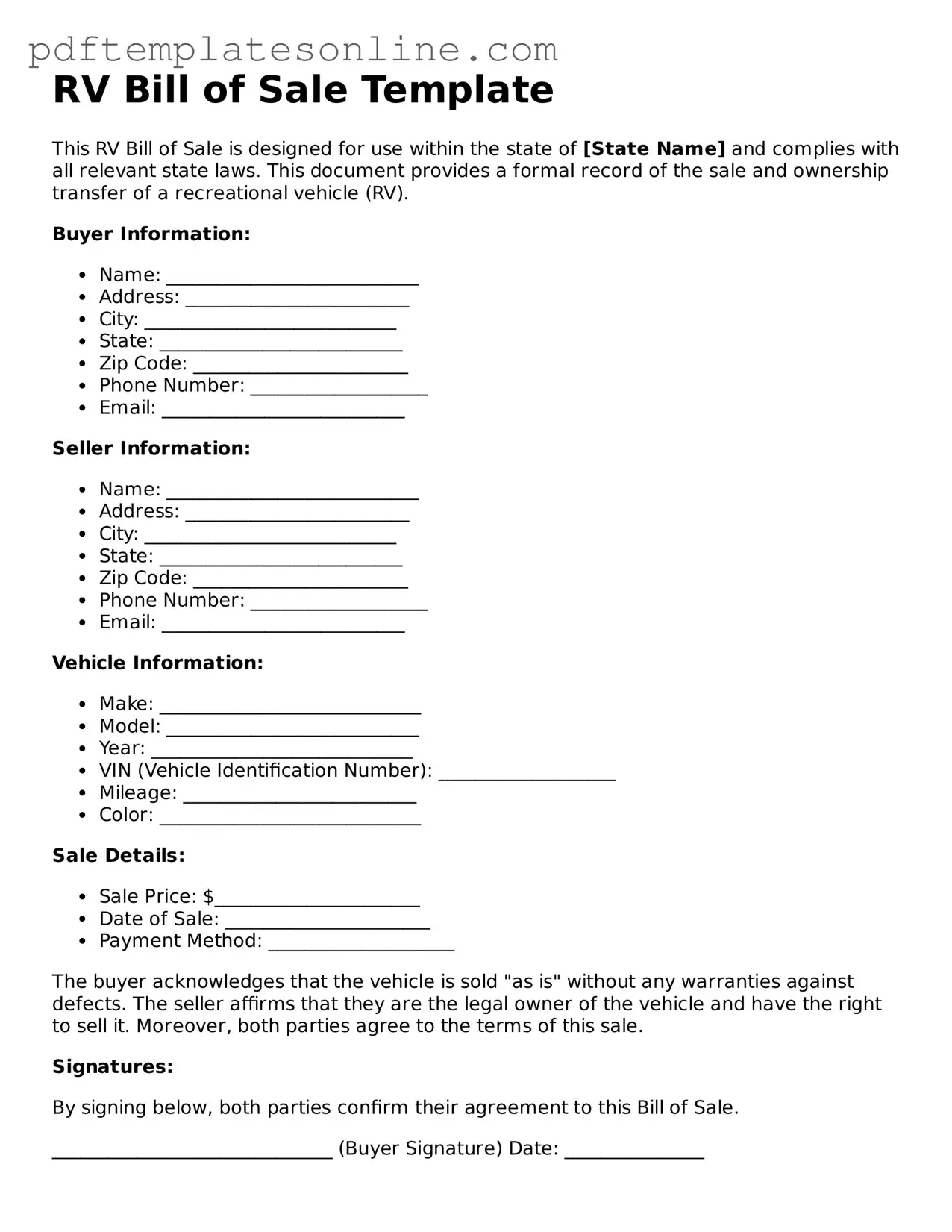Filling out an RV Bill of Sale form is an important step in the buying or selling process. However, many people make common mistakes that can lead to complications down the road. One frequent error is failing to include all necessary information. Buyers and sellers must provide accurate details about the RV, including its make, model, year, and Vehicle Identification Number (VIN). Omitting any of this information can create confusion and may even affect the legitimacy of the sale.
Another mistake is not signing the document. Both the buyer and the seller must sign the Bill of Sale to make it legally binding. Without these signatures, the document may not hold up in court if disputes arise later. It is crucial for both parties to ensure that they have signed and dated the form before finalizing the transaction.
People often overlook the importance of including the sale price. The Bill of Sale should clearly state the amount for which the RV is being sold. This detail not only serves as a record for both parties but also helps in calculating taxes and fees. Failing to document the sale price can lead to misunderstandings and potential tax issues.
Additionally, many individuals neglect to retain copies of the Bill of Sale. After the transaction is complete, both the buyer and the seller should keep a copy for their records. This document serves as proof of ownership transfer and can be vital if questions arise about the sale in the future. Keeping a copy ensures that both parties have access to the same information.
Lastly, people sometimes forget to check for any liens on the RV. Before completing the sale, it is essential to verify that the vehicle is free of any liens or encumbrances. If a lien exists, the buyer may find themselves responsible for debts associated with the RV. Conducting a thorough check can prevent future complications and ensure a smooth transfer of ownership.
